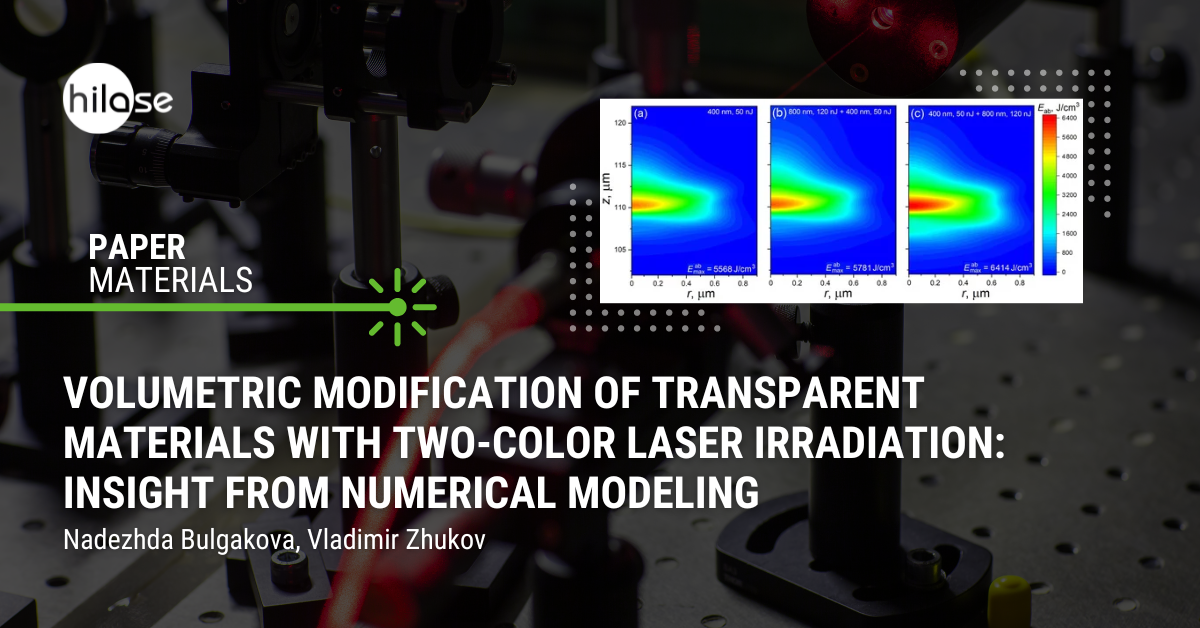HiLASIANS Nadezhda Bulgakova (head of Scientific Laser Applications) and Vladimir Zhukov recently published a new study in the Materials journal.
The paper, titled Volumetric Modification of Transparent Materials with Two-Color Laser Irradiation: Insight from Numerical Modeling, opens new perspectives for a controllable 3D laser writing of highly localized structural changes in optical materials for optoelectronic and photonic applications.

Traditionally, single-color laser beams are used for material processing and modifications of optical, mechanical, conductive, and thermal properties of different materials. So far, there are a limited number of studies about the dual-wavelength laser irradiation of materials, which, however, indicate a strong enhancement in laser energy coupling to solid targets. Here, a theoretical study is reported that aimed at exploring the volumetric excitation of fused silica with dual-wavelength (800 nm and 400 nm) ultrashort laser pulses focused on the material’s bulk. Numerical simulations are based on Maxwell’s equations, accounting for the generation of conduction electrons, their hydrodynamic motion in the laser field, and trapping into an excitonic state. It is shown that, by properly choosing the energies of the two laser harmonics successively coupling with the material, it is possible to strongly enhance the laser energy absorption as compared to the pulses of a single wavelength with the same total energy. Laser energy absorption strongly depends on the sequence of applied wavelengths, so that the shorter wavelength pre-irradiation can yield a dramatic effect on laser excitation by the following longer-wavelength pulse. The predictions of this study can open a new route for enhancing and controlling the highly localized absorption of laser energy inside transparent materials for optoelectronic and photonic applications.








